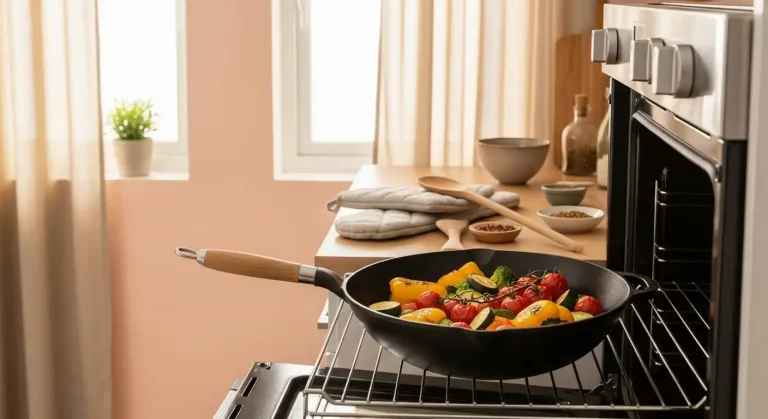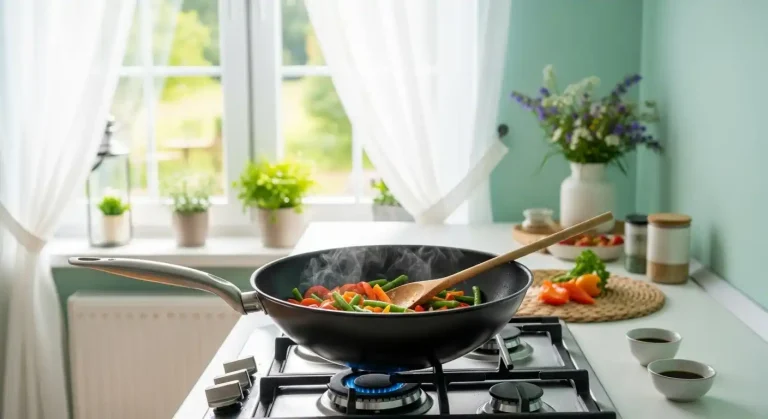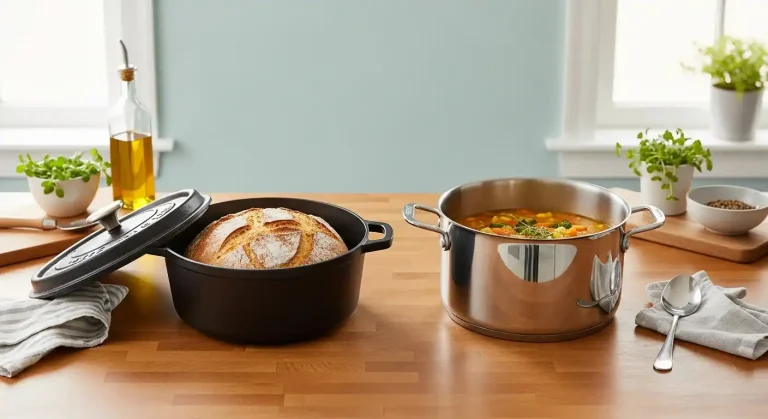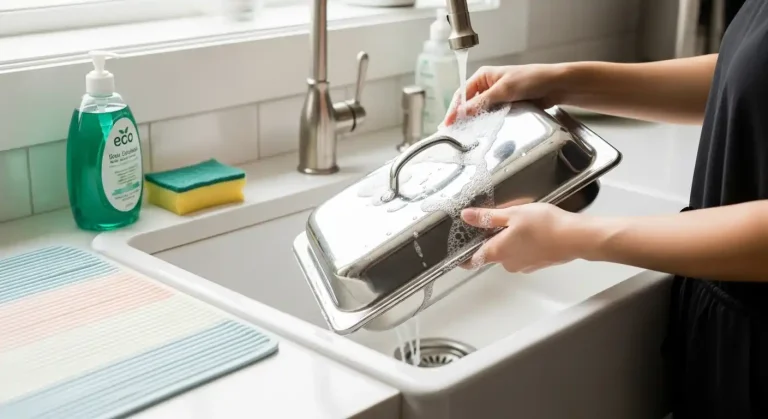Wok Vs Frying Pan: Which Is the Better Choice for Your Kitchen?
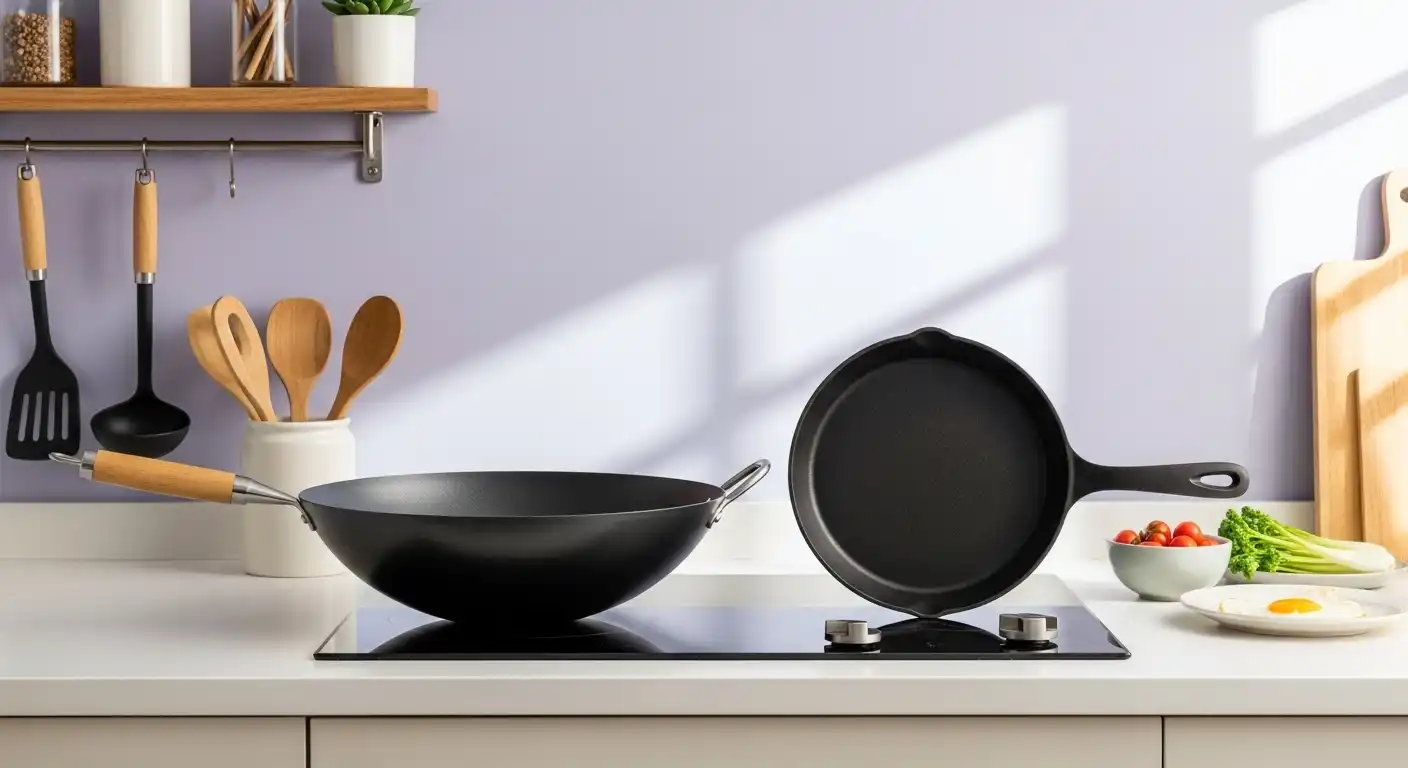
When it comes to versatile cookware, the debate of Wok Vs Frying Pan often sparks curiosity among home cooks and professional chefs alike.
Both are kitchen staples, but their unique designs and functionalities cater to different cooking styles.
This article dives deep into the differences, advantages, and best uses of woks and frying pans to help you decide which is right for your culinary adventures.
Understanding the Wok: A Versatile Cooking Vessel
A wok is a round-bottomed, high-sided pan originating from China, traditionally used for stir-frying.
🎄 Christmas & Year-End Amazon Deals !
Don’t miss out on the best discounts and top-rated products available right now!
*As an Amazon Associate, I earn from qualifying purchases.
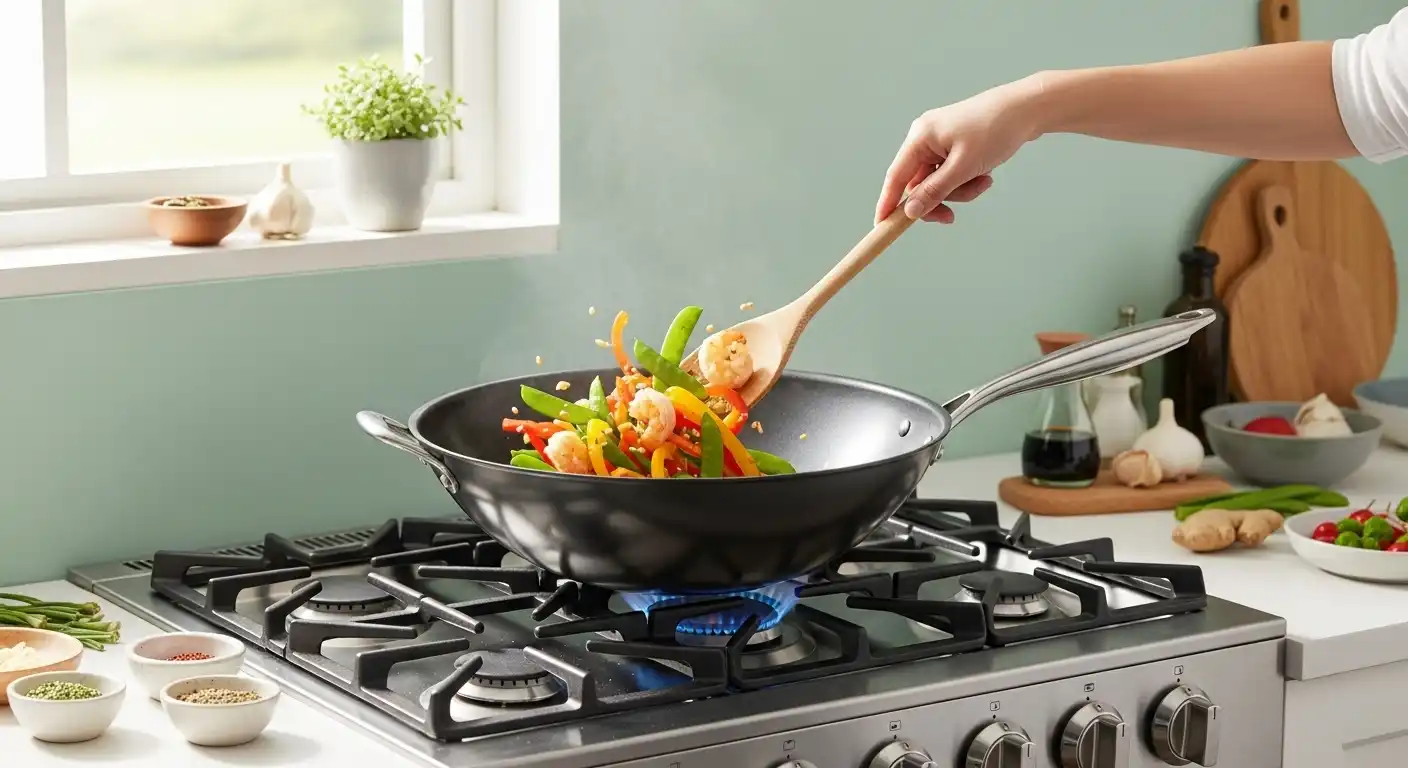
Its unique shape, with sloping sides and a small base, allows for even heat distribution and quick cooking at high temperatures.
Woks are typically made from materials like carbon steel, cast iron, or stainless steel.
Carbon steel woks are particularly popular due to their lightweight nature and ability to develop a natural non-stick patina over time.
The design of a wok makes it ideal for tossing ingredients, ensuring they cook evenly while retaining their texture and flavor.
Beyond stir-frying, woks can be used for steaming, braising, and even deep-frying.
Exploring the Frying Pan: A Kitchen Classic
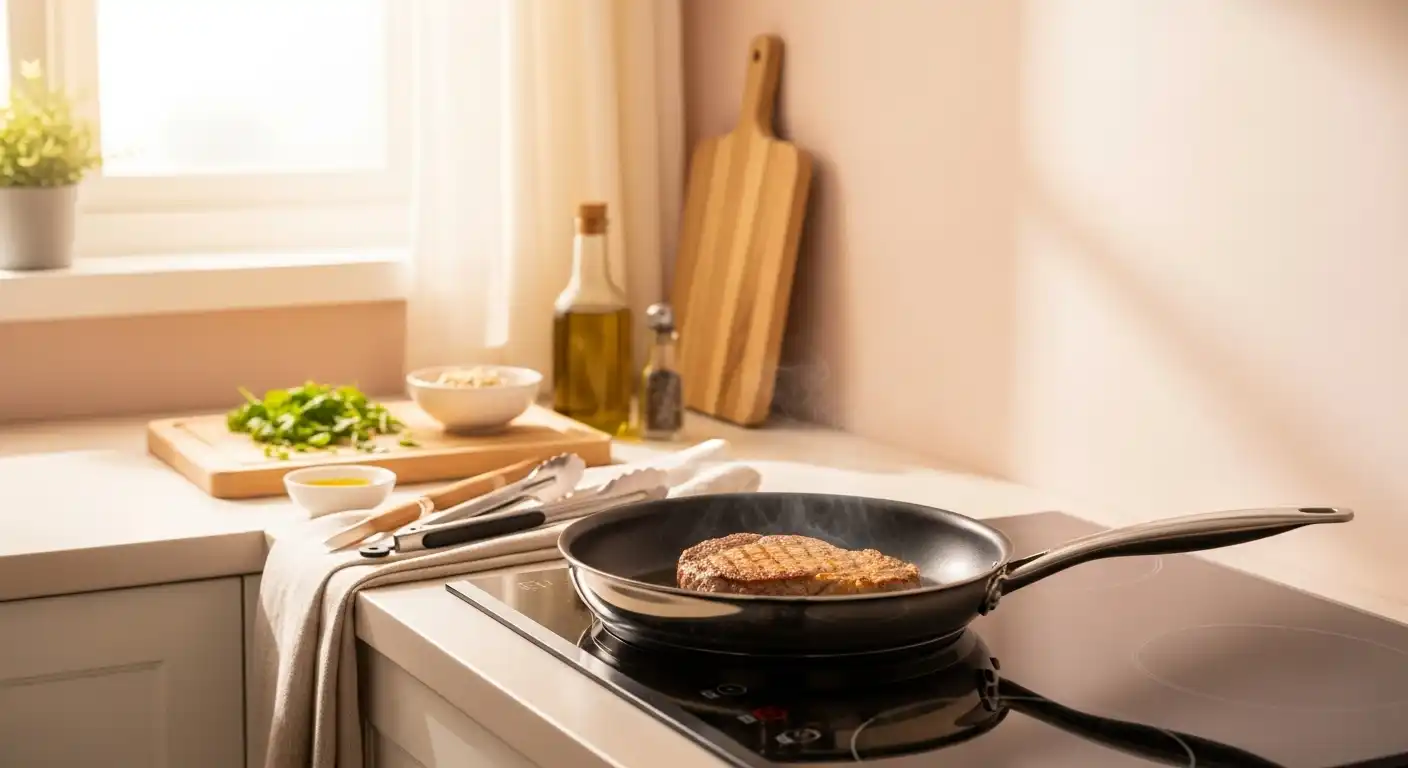
A frying pan, often called a skillet, is a flat-bottomed pan with low, slightly flared sides.
It’s a go-to for tasks like sautéing, searing, and frying. Frying pans come in various materials, including stainless steel, non-stick, and cast iron.
The flat surface of a frying pan ensures maximum contact with the heat source, making it perfect for browning meats or cooking delicate foods like eggs.
Unlike woks, frying pans are often more compatible with Western cooking techniques.
For a deeper dive into frying pan specifics, check out this comparison of skillet vs frying pan.
Wok Vs Frying Pan: Design and Structure
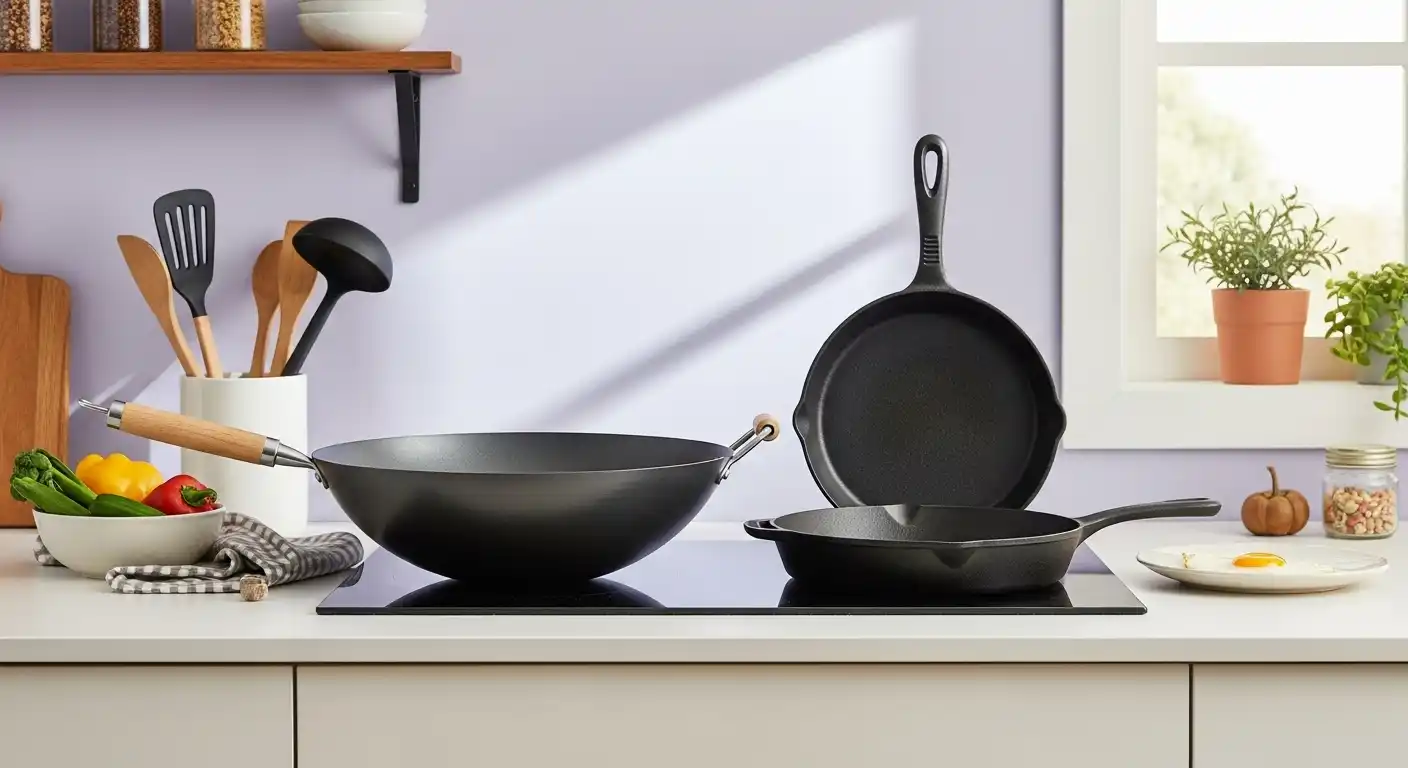
The most noticeable difference between a wok and a frying pan lies in their shape.
A wok’s deep, curved sides and narrow base allow for tossing and stirring without spilling. This makes it ideal for high-heat cooking methods like stir-frying.
Frying pans, on the other hand, have a wide, flat base and shallow sides, offering more surface area for browning and searing.
This design is better suited for foods that require consistent contact with the cooking surface.
🎄 Christmas & Year-End Amazon Deals !
Don’t miss out on the best discounts and top-rated products available right now!
*As an Amazon Associate, I earn from qualifying purchases.
The choice between the two often depends on the type of stove you use.
For instance, using a round-bottom wok on an electric stove may require a wok ring for stability.
Cooking Techniques: Wok Vs Frying Pan
Woks excel in high-heat, fast-cooking techniques. Stir-frying, a hallmark of wok cooking, involves quickly tossing ingredients in a small amount of oil.
The wok’s shape allows for even heat distribution, ensuring ingredients cook uniformly.
Frying pans are better suited for slower, more controlled cooking.
They’re ideal for pan-frying, sautéing, or preparing dishes that require a crispy exterior, like seared steaks or fried eggs.
Curious if a wok can double as a frying pan? Learn more in this article on using a wok as a frying pan.
Heat Distribution and Cooking Efficiency
Woks are designed for high-heat cooking, with their small base concentrating heat at the bottom and the sloped sides creating a gradient of temperature zones.
This allows you to move ingredients to cooler areas while others cook.
Frying pans distribute heat evenly across their flat surface, making them ideal for consistent cooking.
However, they may not handle high-heat tossing as effectively as a wok.
For those with induction cooktops, compatibility is key.
🎄 Christmas & Year-End Amazon Deals !
Don’t miss out on the best discounts and top-rated products available right now!
*As an Amazon Associate, I earn from qualifying purchases.
Check out whether a wok works on induction in this guide: Will a wok work on an induction cooktop?.
Versatility in the Kitchen
A wok’s versatility extends beyond stir-frying. You can use it to steam vegetables, braise meats, or even.
Its deep sides make it suitable for preparing large batches of food.
Frying pans are versatile in their own right, excelling at tasks like frying, sautéing, and even baking in oven-safe models.
However, their shallow sides limit their capacity for larger dishes or liquid-based cooking.
For creative wok recipes, explore what you can cook in a wok besides stir-fry.
Material Choices: Wok Vs Frying Pan
Woks are often made of carbon steel, which requires seasoning to develop a non-stick surface.
Cast iron woks are heavier but retain heat well, while stainless steel woks are low-maintenance but less traditional.
Frying pans come in non-stick, stainless steel, or cast iron varieties.
Non-stick frying pans are great for low-fat cooking, while cast iron offers durability and excellent heat retention.
Wondering about wok maintenance? Learn how to season a wok on an electric stove.
Compatibility with Modern Stoves
Using a wok on modern stovetops can be tricky. Round-bottom woks may not sit well on flat electric or glass-top stoves without a wok ring.
🎄 Christmas & Year-End Amazon Deals !
Don’t miss out on the best discounts and top-rated products available right now!
*As an Amazon Associate, I earn from qualifying purchases.
For more details, see using a wok on a glass-top stove.
Frying pans, with their flat bottoms, are naturally compatible with most stovetops, including induction and electric.
This makes them a more straightforward choice for many home kitchens.
Cleaning and Maintenance
Woks, especially carbon steel ones, require careful maintenance to preserve their seasoning.
Cleaning a carbon steel wok involves gentle scrubbing and re-seasoning to maintain its patina.
Frying pans vary in maintenance needs. Non-stick pans are easy to clean but may wear out over time, while cast iron frying pans require similar seasoning to woks.
Want to know what a healthy wok patina looks like? Check out what should my wok patina look like?.
Which Is Better for Your Cooking Style?
Choosing between a wok and a frying pan depends on your cooking preferences.
If you love Asian-inspired dishes, high-heat cooking, or preparing large meals, a wok is a fantastic choice. Its versatility makes it a must-have for adventurous cooks.
For those who prioritize Western cooking techniques, like searing or sautéing, a frying pan is likely the better fit.
Its flat base and even heat distribution make it a reliable workhorse for everyday meals.
Still unsure? Explore why a wok might be better than a frying pan for specific dishes.
🎄 Christmas & Year-End Amazon Deals !
Don’t miss out on the best discounts and top-rated products available right now!
*As an Amazon Associate, I earn from qualifying purchases.
Size and Storage Considerations
Woks come in various sizes, typically ranging from 10 to 16 inches.
Choosing the right size depends on your household and cooking needs. Learn more in what size wok should you buy?.
Frying pans also vary in size, with 8 to 12 inches being common for home use.
Their flat shape makes them easier to store than woks, which can take up more space due to their depth.
Cost and Durability
Woks are generally affordable, with carbon steel models being budget-friendly and durable when properly maintained.
Cast iron woks, like the Lodge cast iron wok, are pricier but built to last.
Frying pans range widely in price. Non-stick pans are often cheaper but may need replacing sooner, while high-quality stainless steel or cast iron pans are more durable but come at a higher cost.
Final Thoughts: Wok Vs Frying Pan
In the Wok Vs Frying Pan debate, there’s no definitive winner—both have their strengths.
A wok shines for high-heat, versatile cooking, especially for Asian cuisine. A frying pan is ideal for precise, controlled cooking and Western dishes.
Consider your cooking style, stove type, and kitchen space when choosing. For a deeper comparison, revisit wok vs frying pan to solidify your decision.
Ultimately, having both in your kitchen can cover all bases, letting you tackle any recipe with confidence.

